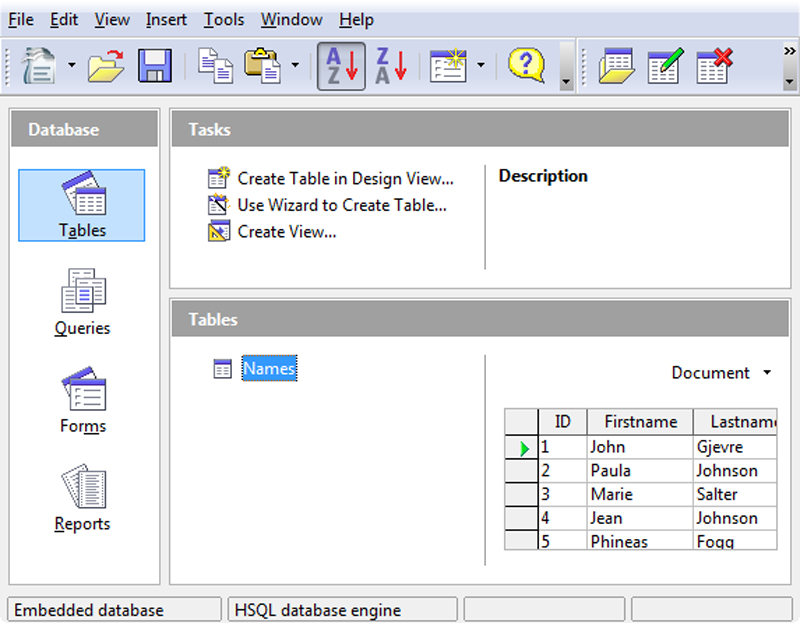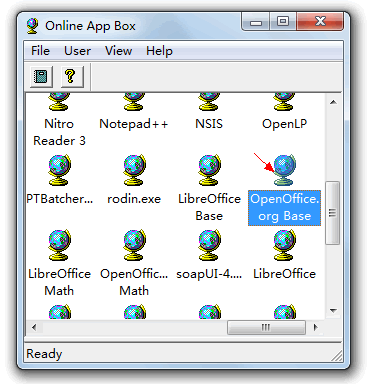

- #OPENOFFICE BASE IMPORT DATA INSTALL#
- #OPENOFFICE BASE IMPORT DATA ZIP#
- #OPENOFFICE BASE IMPORT DATA WINDOWS#
It would have taken several hours for me to recompile my information. It opened, and you saved me so much work. I followed the instructions for recovering corrupt.

I recently prepared an image-heavy document for school in OpenOffice. I am so excited I just had to e-mail you. Researching showed me no single place offering step-by-step instructions for document recovery, so this page was born. It's great to know these instructions are helping others, and thanks for letting me know! I originally designed this page after doing lots of research on my own, as I thought I had lost an document myself. Search all files, and search for a unique phrase or word you are sure is contained in your document text.
#OPENOFFICE BASE IMPORT DATA ZIP#
For each file (look in sub-folders too), perform the steps in option 4, above: Rename the file with a ZIP extension and try to open the resulting " content.xml".ħ) Text string search: Run a search on your entire computer. Look for files and folders that were last modified on the date and time you last had a working file. This will probably be a pretty messy place, and lots of the folders and files have meaningless names, but sort the results by the "Date Modified" column and look at the results. In Windows, browse to this folder:Ĭ:\Documents and Settings\ USERNAME\Local Settings\Temp Sometimes removing the styles.xml from the document does the trick.Ħ) Look in your Temp directory. Alternatively, you can try deleting the " styles.xml" document, rename the file back to an extension, and try opening the file as normal. It will have a bunch of formatting statements you'll have to delete, but the actual text should be there too. Open this file with any text editor, and you may find your document text. If you're lucky, you'll see a bunch of files contained in this newly-created Zip file.
#OPENOFFICE BASE IMPORT DATA WINDOWS#
Then open the file using Microsoft Windows or WinZip. Change the extension of your document from whatever it is (like ODT, ODS, ODP, ODG, ODB, ODF) to a ZIP extension. Copy it somewhere else and open it with OpenOffice.ĥ) Rename as a ZIP file. It will have the same filename as your original, only with a. If you've checked the "Always create backups" in the OpenOffice settings, keeps backups of all your files at this location:Ĭ:\Documents and Settings\ USERNAME\Application Data\\user\backupīrowse to that location and see if your file is there. (For spreadsheet, Calc or ODS documents, instead use the " Insert -> Sheet from File" menu option.)Ĥ) Find backups. Go to the " Insert -> File" menu and insert your corrupted file.
#OPENOFFICE BASE IMPORT DATA INSTALL#
Try the following to recover OpenOffice data (and make sure you have a backup of the original problem file, just in case):Ģ) Do you have the latest version of installed? If not, download it, install it, and try to open the file again.ģ) Insert the file. The file 'file.odt' could not be repaired and therefore cannot be opened.Ī little intimidating, and not good to see. The file 'file.odt' is corrupt and therefore cannot be opened. You might see scary error messages like these:įormat Error discovered in the file in sub-document styles.xml at 2,2568(row,col) If the CSV file uses a text delimiter character that is not in the Text delimiter list, click in the box, and type the character.So you've been using and you have a corrupted file in programs like Base, Calc, Draw, Impress, Math or Writer. Right-click a column in the preview to set the format or to hide the column. You can preview the layout of the imported data at the bottom of the dialog.


 0 kommentar(er)
0 kommentar(er)
